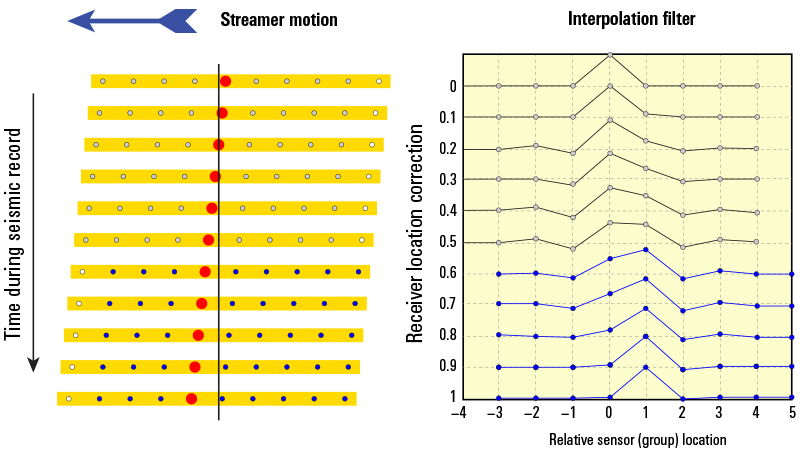Receiver Motion Compensation
Removal of errors caused by continuous receiver movement

Ensured accuracy of streamer seismic data
With marine towed-streamer acquisition, the receivers continue to move through the water after the source is fired. This movement introduces time-variant positioning errors in the recorded data, smearing data horizontally. Receiver motion compensation (RMC) removes these errors, placing data in the position they would have been recorded had the receivers remained stationary for the duration of the recording. This 2D process applies a spatial correction to data based on the sample interval, receiver spacing, and sample rate—shifting data toward the front of the cable. The amount of correction increases with recording time and the speed at which the cable is towed.
Benefit from a wide range of applications
RMC is applied early in the processing sequence, immediately after the navigation information is merged with the seismic data, so that all subsequent processing steps can take advantage of the correction.
The technique is applicable to
- any marine towed-streamer seismic data where the vessel speed is known with reasonable accuracy
- marine seismic data with any source-receiver configuration.
It is suitable for dense inline single-sensor sampling used by single-sensor acquisition techniques and multicomponent seismic acquisition technology. RMC also applies to data recorded by other acquisition technologies and legacy data if the data is interpolated to the optimal receiver spacing.

